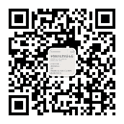| 基金项目: |
|
| 摘要点击次数: 2459 |
| 全文下载次数: 0 |
| 中文摘要: |
| 目的 探讨基于虚拟仿真软件的磁共振成像序列实验在医学影像技术专业本科教学中的应用效果。方法 以四川大学华西临床医学院2015级和2016级医学影像技术专业56名本科学生为研究对象,2016级为实验组,2015级为对照组。实验组采用基于虚拟仿真实验的教学方法,对照组采用传统小型磁共振的教学方法。比较两组学生的课后考试成绩和期末考试成绩,并对实验组学生进行教学效果问卷调查。采用SPSS 21.0软件进行t检验和Mann-Whitney U检验。结果 实验组课后考试成绩(84.55±6.57)和期末考试成绩(90.03±4.72)均高于对照组(79.37±6.13)和(80.06±7.29),差异具有统计学意义(P<0.05)。问卷有效回收率为100%,问卷调查显示实验组在增加学科兴趣、扩展相关知识面、解决临床工作、促进团队协作等四个方面都优于对照组(P<0.05)。结论 在磁共振成像序列的实验教学中,基于虚拟仿真软件的教学可增加学生学习兴趣,加强学生对磁共振原理的理解,从而有效提高医学影像本科教育的教学效果。 |
| 英文摘要: |
| Objective To explore the application effect of magnetic resonance imaging (MRI) sequence experiment based on virtual simulation software in undergraduate teaching of medical imaging technology. Methods Fifty-six undergraduate students from the Batch 2015 and Batch 2016 medical imaging technology of West China Clinical Medical College of Sichuan University were recruited in this study. They were divided into 2 groups: experimental group (Batch 2016) and control group (Batch 2015). The experimental group adopted the teaching method based on virtual simulation experiment, and the control group used the teaching method based on traditional small-sized magnetic resonance. The after-class test scores and final exam scores of the two groups of students were compared, and the questionnaire survey on teaching effectiveness was conducted for students in the experimental group SPSS 21.0 was used for t test and Mann-Whitney U test. Results The scores of theoretical knowledge and the final grades in the experimental group were significantly higher than those of the control group [(84.55 ± 6.57) points vs. (79.37 ± 6.13) points; (90.03 ± 4.72) points vs. (80.06 ± 7.29) points, all P < 0.05). The effective recovery rate of the questionnaires was 100%, and the questionnaire survey showed that the experimental group was significantly superior to the control group in such four aspects as increasing subject interest, expanding relevant knowledge, solving clinical work, and promoting teamwork (P < 0.05). Conclusion In MRI sequence teaching, the teaching method based on virtual simulation software can increase the students' interests in learning, strengthen their understanding of MRI principles, then effectively improve the teaching effect of medical imaging undergraduate education. |
|
查看全文 查看/发表评论 下载PDF阅读器 |
|
| 关闭 |
|
|
|
